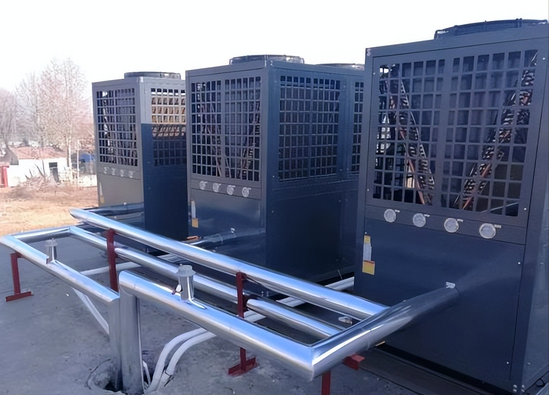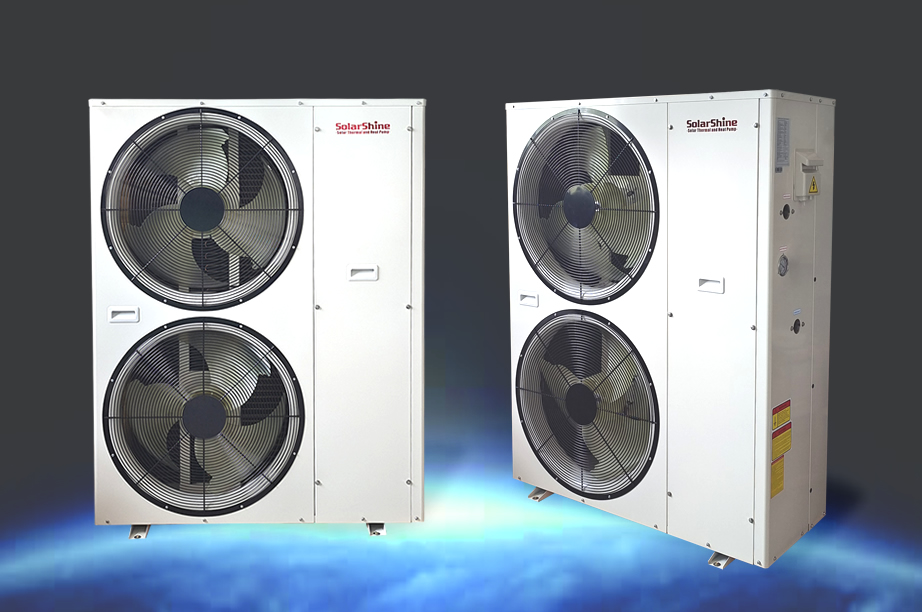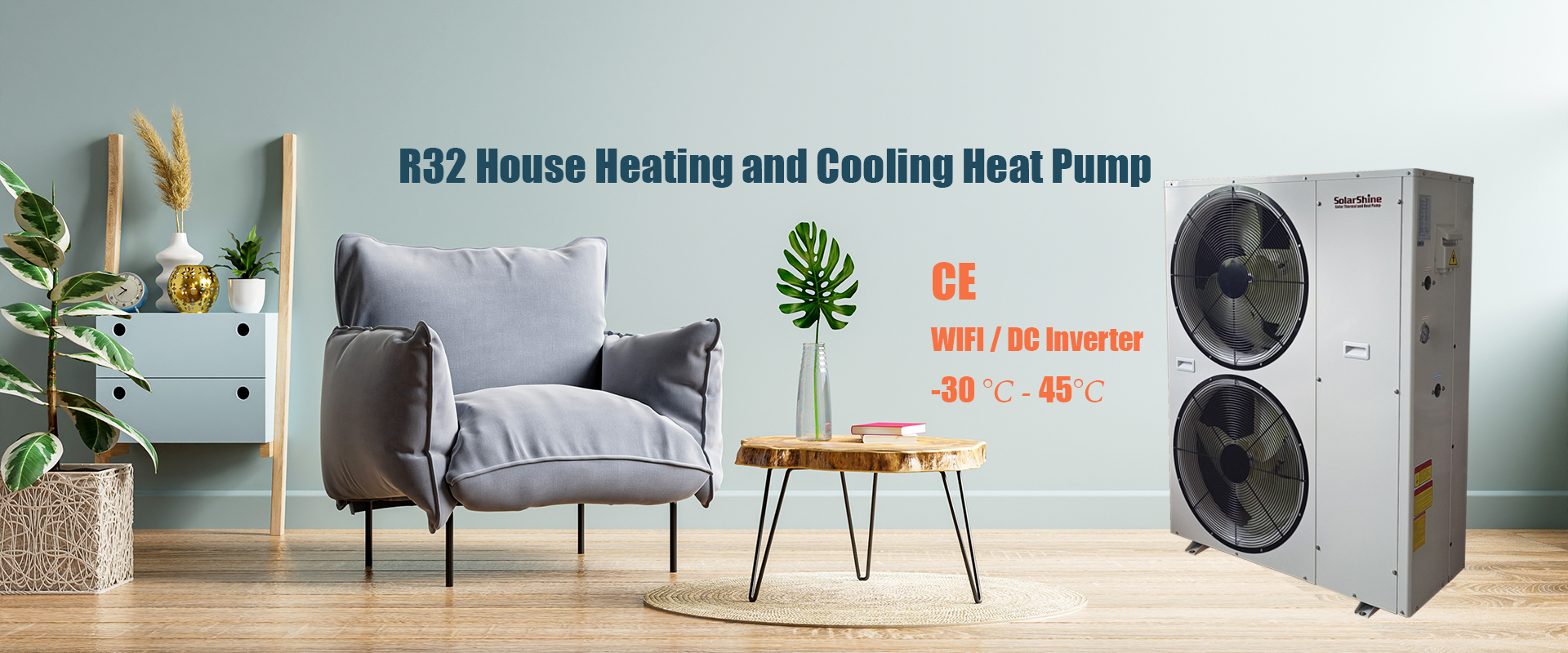With the continuous promotion of clean heating, as well as people’s increasing requirements for comfort, and increasing awareness of environmental protection, air source heat pumps are becoming increasingly popular in the market. For many users, air source heat pumps are a relatively new type, so many consumers compare heat pumps with central air conditioning (HVAC). In fact, air to water heat pumps have been popular in the refrigeration and heating market for many years, have a significant share in the commercial field, and are very popular in Europe. What are the essential differences between air energy heat pumps and central air conditioning? The two can be compared from the following three aspects.
1、 The operating temperatures of air energy heat pumps and central air conditioners are different
Many people do not know the working temperature of central air conditioners, often complaining about their poor heating effect in winter, often blowing out cold air, and particularly consuming electricity. Why does this happen? In fact, we can find the answer in the parameters of the air conditioner. Generally, the operating temperature of the air conditioner is between – 7 ℃ and 43 ℃, which means that the working efficiency of the air conditioner is very low or even cannot work when it is below – 7 ℃. In fact, it is difficult for air conditioners to generate heat at 0 ℃ (greatly affected by the defrosting of air conditioners). At this time, some air conditioners use electrical auxiliary heating to meet the indoor heat demand, resulting in poor air conditioning effects. It also makes the indoor environment drier and has a higher power of electrical auxiliary heating (an indoor unit’s electrical auxiliary heating power is between 1-3KW), so the electricity cost of air conditioners will also be high.
The operating temperature of air energy heat pump unit is generally between – 30 ℃ and 43 ℃, so stable operation can be achieved in most regions of China (also available in the north, one of the important equipment for converting coal to electricity). Moreover, the heat pump uses jet enthalpy increasing technology, which can absorb heat in the outdoor air in winter and obtain high heat through low electricity consumption, with a heating rate of up to 400%. Therefor, air source heat pumps are very energy-saving in northern winter heating, and their heating effect is also first-class, so they can rank among the ranks of winter heating equipment.
2、 Air energy heat pumps offer better comfort than central air conditioning
The working principle of central air conditioning and air energy heat pumps is similar, but the heat exchange medium in the final process is different. Central air conditioners always use refrigerant (Freon, etc.) as a medium, and although air energy heat pumps also use refrigerant to achieve heat transfer, in the final heat exchange stage, air source heat pumps use water for heat exchange, which is one more heat exchange process than fluorine system central air conditioners, and the thermal stability of water is higher than fluorine. This means that central air conditioning is a fluorine system cycle, while air energy heat pumps are water system cycles.
It is well known that fluoride systems, whether cooling or heating, absorb a large amount of water from the air, resulting in dry indoor air, making people hoarse and dry, especially during winter heating. The water system does not have such problems, and the temperature difference changes slightly during work, so the overall humidity is more consistent with human physiological habits and does not cause “air conditioning diseases” such as dry mouth and tongue.
3、 The construction of air energy heat pumps and central air conditioners is different
Air conditioning and air energy heat pumps have different unit configurations due to their different operating temperatures and operating requirements, mainly including the following three points.
① The compressor used in the internal components of the air energy heat pump is an increased enthalpy injection compressor;
② The system pressure is different. The pressure of the air energy heat pump is much higher than the pressure of the air conditioner, so the copper pipe of the air energy heat pump is much thicker than the copper pipe of the air conditioner;
③ The maximum temperature borne by the central air conditioning unit itself generally does not exceed 40 degrees Celsius (in summer, when the ambient temperature is too high, the air conditioner is prone to thermal protection and shutdown), while the air energy heat pump must reach at least 60 degrees Celsius, so it can adapt to higher ambient temperatures during refrigeration. Similarly, the minimum temperature borne by the central air conditioning unit itself is generally not lower than – 7 ℃, while the minimum temperature borne by the air energy heat pump can reach – 30 ℃, so it can adapt to lower ambient temperatures during heating. Therefore air source heat pumps have a wider range of use than air conditioners.
Summary
From the above three aspects, we can see that compared to air conditioners air source heat pumps complement the shortcomings of air conditioners in heating, and provide higher comfort during refrigeration than air conditioners. Therefore air source heat pumps can better meet the dual needs of users for cooling and heating. In addition, the air energy heat pump has a lifespan of more than 15 years and can also be used as a heat source for ground heating. Compared to gas wall mounted boilers, it can save 30% to 50% energy for ground heating. Therefore, selecting air energy heat pump for heating is more economical and affordable.
Post time: Mar-31-2023


